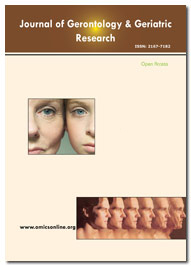Indiziert in
- Öffnen Sie das J-Tor
- Genamics JournalSeek
- SafetyLit
- RefSeek
- Hamdard-Universität
- EBSCO AZ
- OCLC – WorldCat
- Publons
- Genfer Stiftung für medizinische Ausbildung und Forschung
- Euro-Pub
- Google Scholar
Nützliche Links
Teile diese Seite
Zeitschriftenflyer

Open-Access-Zeitschriften
- Allgemeine Wissenschaft
- Biochemie
- Bioinformatik und Systembiologie
- Chemie
- Genetik und Molekularbiologie
- Immunologie und Mikrobiologie
- Klinische Wissenschaften
- Krankenpflege und Gesundheitsfürsorge
- Landwirtschaft und Aquakultur
- Lebensmittel & Ernährung
- Maschinenbau
- Materialwissenschaften
- Medizinische Wissenschaften
- Neurowissenschaften und Psychologie
- Pharmazeutische Wissenschaften
- Umweltwissenschaften
- Veterinärwissenschaften
- Wirtschaft & Management
Abstrakt
Eukaryotic Coupled Dinucleotide Contents Modulate Structural DNA Properties
Georg Hildenbrand*
Dinucleotides are known as determinants for different primary and physiochemical properties of DNA and for restricting affinities of proteins to DNA. It is known that these properties, such as stiffness, and bound proteins, such as transcription factors, have an impact on crucial biological processes like transcription regulation and 3D chromatin organization. As a result, the question arises as to how the vastly different dinucleotide contents of eukaryotic chromosomes can still provide consistent properties that result in comparable functions and threedimensional conformations. In this study, we test the hypothesis that coupled dinucleotide contents moderate each other's effects by influencing properties in opposite directions. We discovered sets of correlated and anticorrelated dinucleotide contents after analysing all chromosomes of eukaryotic species and taking into account bias from coding sequences and enhancers. We estimated the effects of this coupling on DNA properties by employing computational models. We viewed that as particularly unadulterated A/T dinucleotides known to impact histone situating and pertinent mediators and that the Roll property, which is known to impact histone partiality of DNA, is ideally directed. Through regulation of histone occupancy or other mechanisms, we conclude that dinucleotide contents may indirectly influence transcription and chromatin 3D conformation.